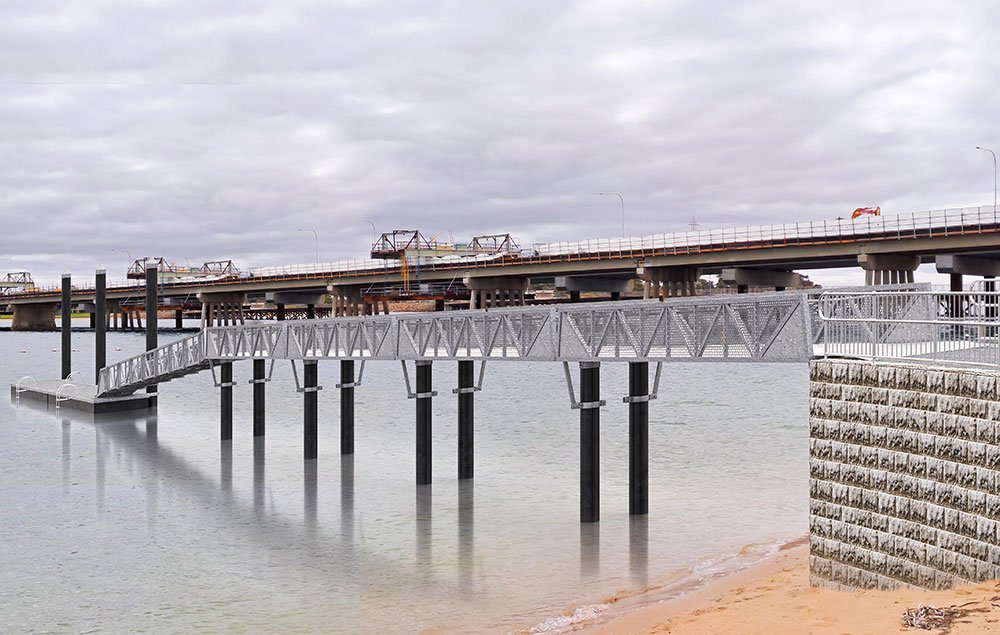How 3D photomontages can help with DA planning submissions
3D photomontages are 3D renders that show what the proposed development will look like once completed. They are commonly used in development application planning submissions to help assessors understand the scale and impact of the proposed development.
3D photomontages can also be used to engage with the community and other stakeholders, and to help market the development. 3D rendering services in Australia can create high-quality 3D photomontages that accurately depict the proposed development. This can make a big difference in getting planning approval for your development. Here are four ways that 3D photomontages can help with development application planning submissions:
1. They give a realistic portrayal of the proposed development
By combining 3D animations with real-world photos, 3D photomontages give a detailed and accurate representation of what the finished development will look like. This is especially important for large developments, where it can be difficult to get an accurate sense of scale from traditional 2D renderings. 3D property renders can also be used to show how the development will fit into the surrounding area, and 3D home renders can be used to give potential buyers a glimpse of what their future homes will look like. When used correctly, 3D photomontages are a powerful marketing tool that can help to sell property developments.
2. They help to visualise the impact of the development on the surrounding area
By combining 3D house renderings with real-world photos, developers can get a better sense of the potential impact of new development on the surrounding area. 3D home renderings can also help to visualise the scale of a proposed development, making it easier for interested parties to understand the magnitude of the project. In addition, 3D architectural renderings can provide a more realistic insight into the finished product, giving potential buyers a better idea of what to expect. Ultimately, 3D photomontages offer a valuable way to assess the feasibility of a development project and its potential impact on the surrounding community.
3. They can be used to assess environmental impacts, such as light pollution or traffic congestion
3D photomontages are a powerful tool to assess the environmental impacts of potential projects. For example, these renders can help planners to visualise the effects of a proposed development on neighbouring areas in terms of light pollution, traffic congestion and other environmental elements that could impact design.
Additionally, 3D product renderings can be employed to assess the impact that launching a new product could have on ambient spaces. By taking into account both the tangible and intangible effects that changes in the environment can cause, with 3D photomontages, one can make more accurate decisions about how projects will affect the surrounding environment.
4. They provide an opportunity for community consultation
CGI photomontages have become an increasingly popular tool for architects and planners during the design and consultation process. By superimposing a CGI rendering of a proposed development onto an existing photo, it is possible to get a realistic sense of how the finished project will look.
This can be useful when consulting with the local community, as it allows people to visualise the finished project and provide feedback. CGI photomontages also have the advantage of being customisable, meaning that different design options can be easily explored.
If you are seeking a professional and reliable service for your development application, contact our expert team.
Summary: Benefits of 3D photomontages in DA planning submissions
3D photomontages offer realistic visualizations of proposed developments, aiding in conveying their final appearance.
They help assess the impact of developments on the surrounding area and provide insights into their scale.
These montages assist in evaluating environmental impacts, such as light pollution and traffic congestion.
3D photomontages enhance community engagement by allowing residents to visualize and provide feedback on proposed projects.
CGI photomontages are adaptable and can explore various design options, making them valuable tools for architects and planners in the consultation process.
FAQs
How can a photomontage help with DA planning submissions?
A photomontage can help present an accurate view of the projected development, showing how the proposed build will sit within and impact the natural environment. They present a clear visualisation to the local council as part of a DA submission. Further, if changes do need to be made to the plans, a photomontage can be edited and re-rendered to accommodate alterations.
What photo needs to be provided for a photomontage?
High-resolution, good-quality photographs are required for montages and 3D renders. These could be taken by the client, by a professional photographer, or even by drone if you want a bird’s eye view of the development. Site photos are also required showing the precise angle you want the 3D home rendering to be viewed from.
How is a photomontage created?
Photomontages are created by first collecting all assets, such as the requested view, any CAD files, time of day and timeline, and colours and material samples. From these assets, the first view of the model is created, and the architecture and viewing angle are confirmed before landscaping, lighting and decorations are completed and the CGI property image is rendered.
What is a photomontage?
A 3D photomontage is a composite photograph made by cutting, rearranging and overlaying several photos within a new image. Sometimes this new image is photographed to create a seamless final image. Your 3D architectural render is placed directly into your development site, communicating how the entire development will sit within the streetscape.


